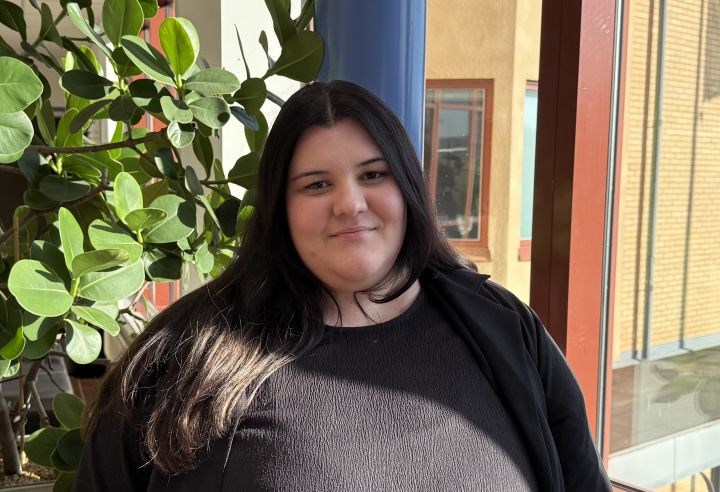Music helps – but listening habits can impact hearing health

Iris Elmazoska is studying young people’s music listening habits and the risks it poses to their hearing.
Music is more of a personal experience for young people and plays a significant role in their well-being and emotional regulation. However, using headphones almost around the clock risks leading to hearing damage. Research at Örebro University lends support to initiatives to raise awareness about high sound levels and the problems this may cause for society in the future.
Link to Iris Elmazoska’s doctoral thesis: "Music and Hearing Health - A Study on Music Listening Behaviors and Hearing-Related Risks Among Young People".
“There are studies indicating that prolonged listening to music through headphones contributes to increased hearing damage. Music is accessible everywhere via mobile listening. It’s not surprising that our hearing can be affected when music listening begins as early as age 8 or 9, and when it, for many, takes up large parts of the day,” says Iris Elmazoska, researcher at Örebro University, who has been studying young people’s music listening habits and the risks it poses to their hearing.
Measurements on their favourite song
There are few previous research studies that compare the actual volume young people listen to with changes in hearing. Most studies rely on participants estimating how much they listen and at what volume. In Iris Elmazoska’s research, the young participants brought their own headphones and music players. They picked a song they usually listen to and set the volume they typically use, and measurements were taken using lab equipment.
“One study from 2005, followed young people over time and it showed a connection between sound level during music listening and effects on hearing. I hope to continue following the participants in my study to see what changes occur in their hearing over time,” says Iris Elmazoska.
Hearing problems at an early age
A total of 53 young people participated in Iris Elmazoska’s studies. In one of the studies, they were interviewed about how they use music, and they are aware of the risks of listening at high volume. However, they do not always understand the consequences for their hearing. Raising awareness about hearing is a central theme in Iris Elmazoska’s research:
“Hearing problems develop slowly. Often, you don’t notice them until later – when other issues like tinnitus or difficulty understanding speech in noisy environments arise. By then, it’s often too late to do anything about it. Some participants in the study reported ringing in their ears and said they notice when they’ve been exposed to sound for too long. Most of the participants had normal hearing, but in some cases, we observed deterioration in the highest frequencies.”
A break from sounds can reduce the risk of hearing damage
The combination of noise and loud sounds over a long period increases the risk of hearing damage. Many of the young people in the study listen to music through headphones all day, even at school. Some even sleep with headphones in their ears.
“It’s important to take a break from sound exposure and allow recovery. Research suggests that hearing can be protected through periods of silence. Sound fatigue seems to be common among the participants in the study, even if no hearing loss is detected,” says Iris Elmazoska.
Iris Elmazoska has interviewed the youths about their listening habits, and music plays a significant role in their lives. It helps them manage emotions and makes them feel better. Their listening habits differ from those of previous generations.
Helps managing emotions
“Music is more of a personal experience today. In the past, people experienced music together. These youths talk about how music helps them manage emotions and feel better. They don’t think of music as noise, even though most of them know that listening at high volume isn’t good for you. Future risks matter less than how they feel in the moment,” says Iris Elmazoska.
The study lays the foundation for further research into the types of hearing damage that may occur in the future. The equipment used in the study is more advanced than what is typically used. Damage to young people’s hearing is not always detected through standard measurements. To prevent future problems and increased costs for society, both more research and more hearing screenings for young people are needed.
In future research, Iris Elmazoska hopes to test how well young people perceive ordinary speech in, for example, noisy environments, and how that changes. Such measurements would likely make it easier to detect changes in young people’s hearing.
Text: bosn
Translation: Charlotta Hambre-Knight
